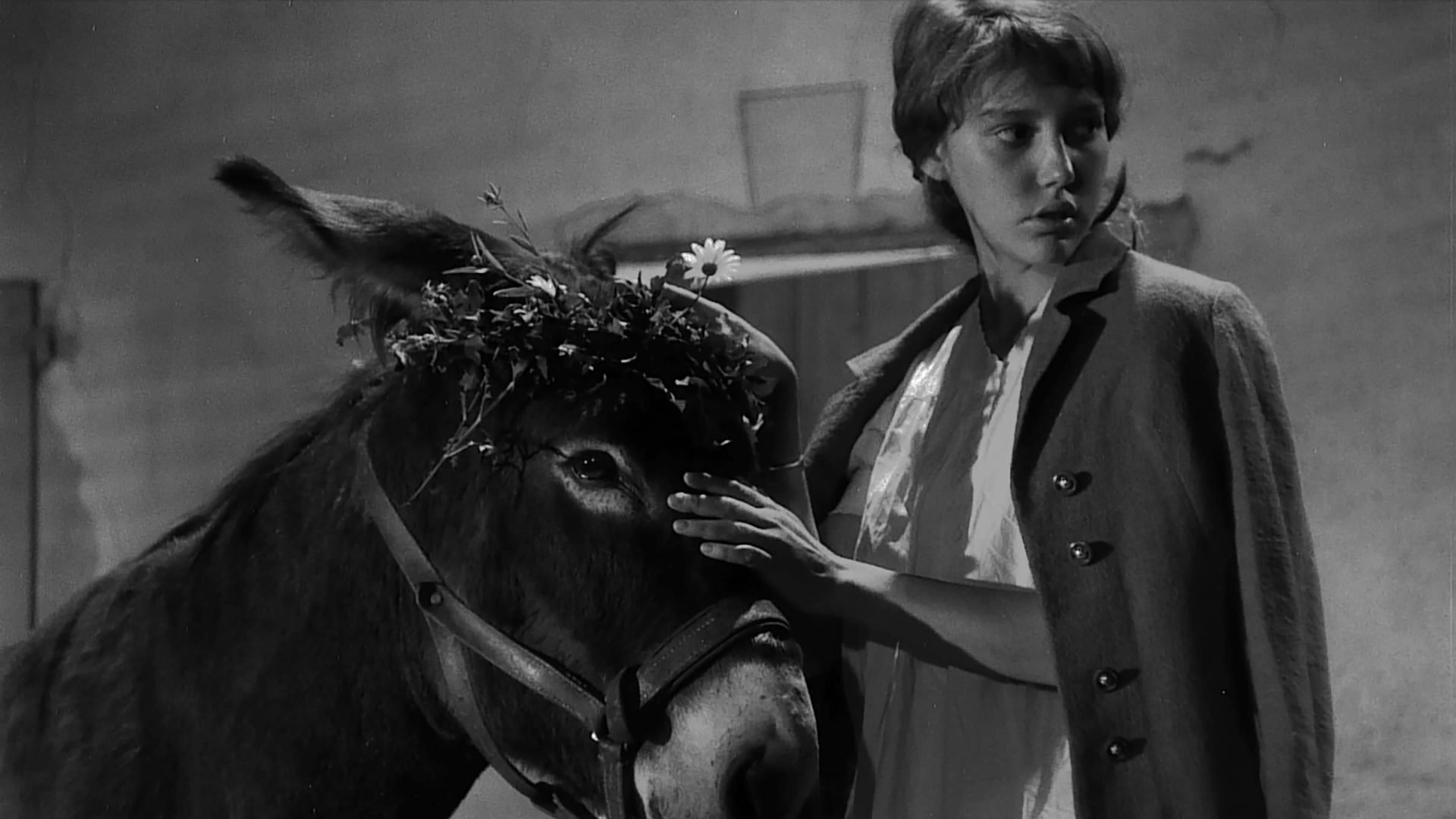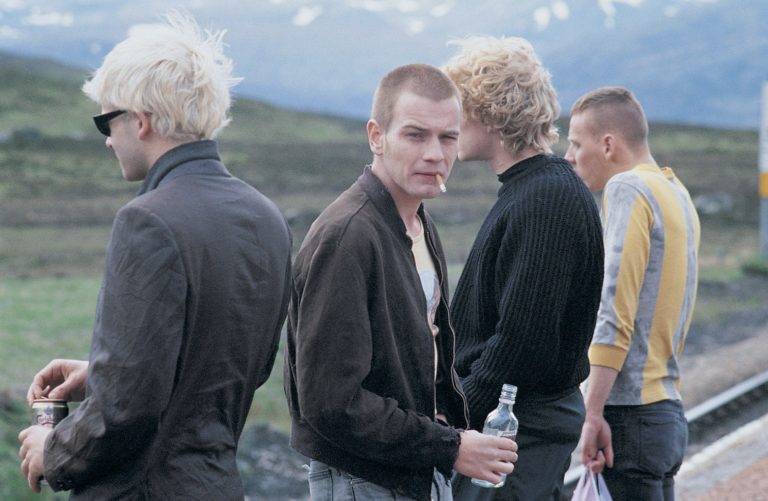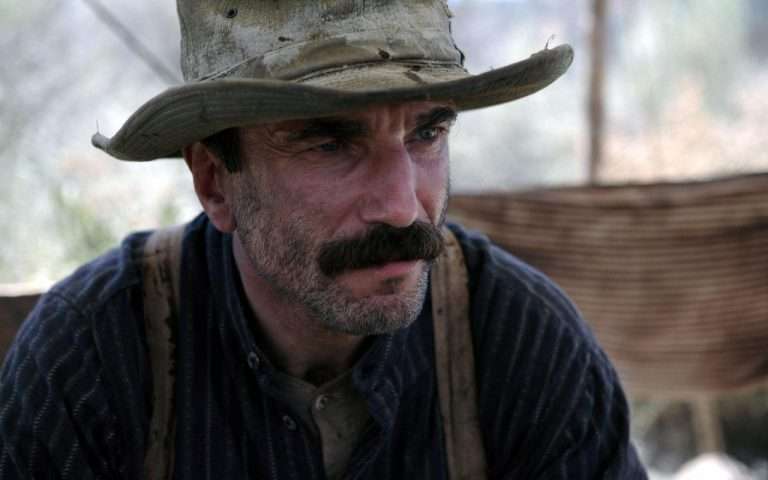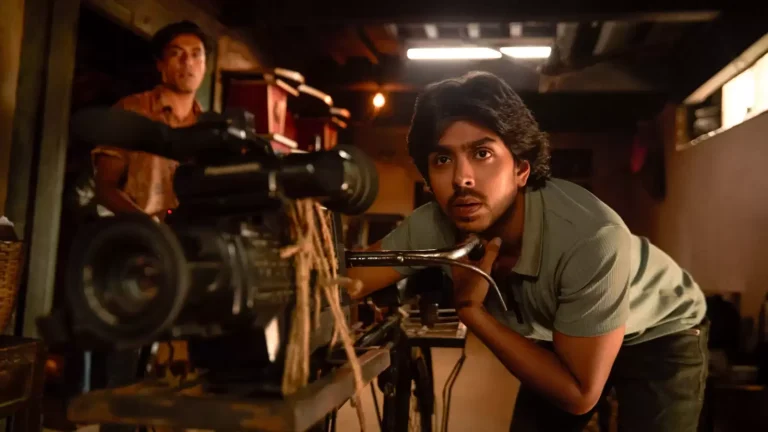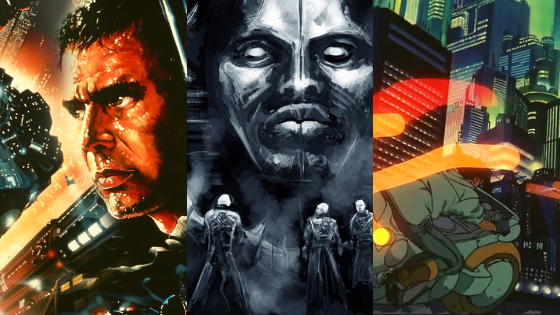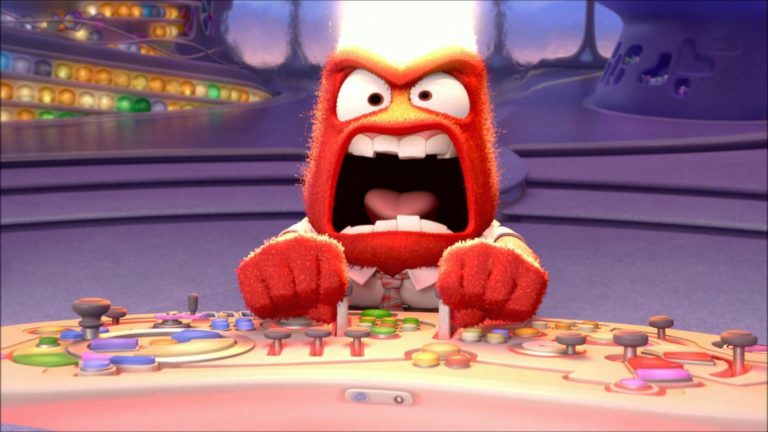EO (2022) Essay: French filmmaker Robert Bresson’s “Au Hasard Balthazar,” shot in austere black-and-white, has frequently appeared in many top 20 films of all time lists, including the list by Sight and Sound. The director, who was often known for his unique interpretation of the term ‘cinematography,’ believing that the former plays in as the higher function of cinema, only made thirteen feature films throughout his career.
The 1966 classic, however, is widely considered the most ‘Bressonian’ film. Thus, he was one of the French filmmakers at the time who reflected on what cinema is and could be. Even after all these years, some of the themes from the film remain timeless, inspiring countless films that similarly encompass a world of moral and physical barbarity. After all, the French New Wave legend Jean-Luc Godard himself famously described the film as ‘the world in an hour and a half.’
Bresson’s transcendental fable remains timeless in its themes even after all these years, not despite its minimalism but because of it. “Au Hasard Balthazar” was not the kind of movie that tried to convince the audience that animals were ‘just like us.’ I use the term ‘fable’ simply because the movie features an animal as its protagonist and carries a moral message that ultimately makes us question the world around us. The main goal of a fable, after all, is to remind us of humans’ connections to the natural world and, in doing so, serve up situations with metaphorical dimensions which supersede any physical actions that happen to be taking place at that moment.
Even though the film had a few scenes depicted from humans’ point of view, they too only served the purpose of further confirming that we, too, are like most animals – intimidating and often terrorizing individuals and groups to assert dominance. The question then arises: why does a film that’s widely considered timeless warrant a remake? Well, Polish filmmaker Jerzy Skolimowski’s “EO” isn’t particularly an official remake of the French film, but the inspiration is quite obvious. The 88-minute film, which is also one of five nominated films in the Best International Feature at the 95th Academy Awards this year, explores the quotidian savagery animals endure even amidst modern-day sensibilities.
Bresson’s film, set in an idyllic pastoral setting, begins with a baby donkey born on a farm and adopted by young Marie. . The birth marks one of the two times we see the donkey at its happiest. Later, Marie and Jacques, the neighboring farmer’s son, decide to baptize him as ‘Balthazar.’ Apart from the obvious Biblical similarities baring in the connotation, the scene also sets a certain rhythm on which Bresson further expands throughout the runtime.
The movie didn’t just have religious themes imposing on the donkey’s fate in the background, it always had the real world and religion side by side. Throughout the course of its elliptical story, Balthazar gets tossed around from one owner to the other, all of whom project their own desires onto the donkey. In the end, Balthazar dies not out of his age but for the sins of those who had transgressed against him, almost as if it were a vicarious way of attaining absolution for vile humanity.
It’s also striking to point out how all the seven owners that Balthazar gets passed to, in many ways, embody the seven deadly sins. It not only suggests some numerical trace of the seven words from the cross or the seven deadly sins but also falls with Bresson’s overall technique of using the rhetoric of reversal. Notes of Schubert accompany the donkey’s death as we watch him surrounded by the sheep.
This marks the second time when we see Balthazar at peace, or is he? The score and the visuals suggest a return to the eternal – a serene and glorious death sanctified by Schubert himself. But all the pain that was inflicted upon Balthazar suggests otherwise: an animal too exhausted to do anything but collapse to the ground, his value rendered trivial by the ineffectual yet brutal actions of the people. Thus, the movie continues to evoke a strong response in the viewer because of this shared dichotomy.
Whereas Bresson used his protagonist as a means to observe different shades of human frailty while examining what role religion had to play in it through minimalism, Skolimowski takes a much more experimental approach, drawing long hypnotic sequences combined with a daunting soundscape atop a similar minimalist narrative.
In his film, EO is directly introduced to the audience as a circus donkey in a sequence bathed in red and blue filters. It’s a powerful way of implying that it doesn’t matter how or where EO was born; this is his purpose now. An animal submitted to man’s barbarity even when the tools around him have gotten way more accessible and advanced to get his petty desires fulfilled.
We never fully learn how the circus where EO works treats its animals. But in the next scene, we watch it get shut down over a new animal rights ordinance that has been passed. A bunch of protesters fighting for animal rights are standing outside and shouting slogans as we watch EO being carted away right in front of them. Thus, right from its second scene, “EO” establishes a sense of place and grounds itself in the hypocrisy of today’s modern culture.
In fact, the recent news cycle shows the same thing is happening across France today. Activists across many parts of Europe have been demanding that certain animals should no longer be used in the media entertainment space, making their trainers put them down. But is that enough? Where do these creatures go, then? Can the fruitful intentions behind these demonstrations ever come to their fruition merely by breaking a system?
Bresson’s film had evident parallels between Balthazar and Marie, the latter of which goes from being a girl who takes care of the donkey to someone who herself gets passed from master to master without any release from suffering. Jacques, her childhood sweetheart, almost plays a Judas-like figure throughout the film, and Marie keeps falling back to square one until she disappears, probably into a state of servitude.
Meanwhile, EO is well looked after at first in the Polish film, downright adored by his caretaker Kasandra, the dancer from the start of the film, along with whom EO performs in the ring. She caresses him and even feeds him carrot muffins on occasion for years, the latter of which translates into one of the film’s most moving scenes. However, right after that scene, we watch Kasandra leave on a bike with her friend, leaving EO’s fate into oblivion. The donkey chases her, and that’s the last we see of her. It didn’t take any of the deadly sins or a sadist childhood lover for the caretaker to abandon the donkey this time around.
At one point in the film, EO shows up at a regional soccer game, where he winds up playing a hand in the local team’s victory. This upsets the other team, who blame the donkey for the result. The winning team then takes EO to a bar to celebrate, only to leave him alone in the parking lot, where he’s left unwatched. There, he’s beaten up by the hooligans from the opposing team with baseball bats. Unlike the firecracker bursting scene from the French film, the scene depicts the violence in a much more responsible and unique way. By refraining from showing us the act in a usual way, the camera simulates EO’s first-person perspective.
From a narrative point of view, Bresson’s film was a departure from cinema-tic on-screen sentimentality. Balthazar was subject to constantly changing owners, an anonymous possession that was not only subjected to indifference but brutality. Although a similar subtext holds true here, for the most part, Skolimowski anthropomorphizes the donkey, giving him subjective pov shots and lucid dream sequences.
Whereas the ending of Bresson’s film almost appeared like an objective Christ story, in how Balthazar doesn’t get resurrected but collapses to the earth, Skolimowski’s film doesn’t just highlight humans’ barbarity but also their sheer ignorance and indifference. At the film’s end, EO is the only donkey amongst a large herd of cattle, but this doesn’t even seem to appall any present human around. As a result of which, EO is edged along with the cows into a slaughterhouse. His death is merely implied by the recurrent unmistakable sound of the sharp blades slicing together but never shown.
Even though Bresson looked at Balthazar as an ambivalent beast, wasn’t naming the donkey in itself a way of anthropomorphizing it? We felt for Balthazar’s eventual fate more because of the dichotomies that had been established earlier, not because of Bresson’s willful intention of anthropomorphizing its central subject. This itself said something powerful in the way we tend to project our subjective emotions on a fable of this sort.
In “EO,” the human encounters only appear as vignettes since we already know these stories. Every episodic human story ends abruptly, without any true resolution for us, the viewer, by cutting away to EO. It’s an adroit way of showing how apathetic animals can be to humanity’s woes, troubles, and trivial triumphs. Thus, Skolimowski’s film commits itself to fully sticking with its protagonist’s point of view while anthropomorphizing him.
There appeared striking signifiers of modernity throughout Bresson’s film: cars, coins, benches, guns, booze, jukeboxes, telegraph poles, transistor radios, and —more notably — official and similar instruments of control and incarceration. The latter of which was shown as a harness that tamed Balthazar. These objects served a narrative purpose in establishing human creeds and acquisitiveness and amplified the widening gap between the bourgeoisie and the proletariat. The portrayal struck a chord with the audience as France was going through massive student protests throughout the 1960s.
The 84-year-old filmmaker, in his Polish film, evokes a sense of paranoia with its daunting sound design and off-kilter ostentatious acrobatic drone shots, soaring high over the countryside, passing through giant windmills. This is further reiterated through pov shots of EO as we root along his unpredictable journey. After acts of brutality inflicted upon the donkey, the camera soars above the countryside, evoking something extremely visceral by showing the geography of Poland and the way humans — their buildings, roads, and cars have claimed and, in some cases, even disfigured the former. Somehow, the experimental approach works alarmingly to draw our attention to the climate crisis staring at our faces.
Just as the beginning of the film eludes itself, the key takeaway from “EO” remains how the futile demonstration of humans for animal rights appears like a play. It often appears like an act of submitting to social media’s wormhole of falling along the line by virtue signaling to everything to gain some cultural capital, eventually making one feel morally superior to others.
In Bresson’s 1966 film, two kids christened a newborn donkey in the film’s opening minutes. In the Polish film, religious ideas and institutions take a backseat, as the threat posed remains relatively less urgent to the polemical culture of the 60s. However, the point of Skolimowski’s film is to draw our attention not to the dichotomies in the narrative but to ones that masquerade as paranoid temperaments within us. It shows how even though the sensibilities of today’s times might appear different, human nature and the scale of its cruelty still remain alarming. Underneath the semblance, humans remain the world’s ultimate foul custodians.

